Ede Telcs's public and funeral works are characterised by a strong respect for the age styles that preceded his life, but in his sculptures he always found an individual voice in addition to looking back at the past.
On 12 May 1872, Ede Telcs was born in Baja in the family of an artisan. Of the twelve children, he was the second son. He completed his elementary school and high school studies in Subotica, as his family moved to this city in 1874. Although young Ede was not a role model at school, his creative talent stood out early on. It is special that on one occasion he even failed at art class - he liked to draw portraits of the greats of the Hungarians much better than the obligatory, boring drawing tasks.
He was particularly interested in history, collecting old money and reading a lot. He continued his drawing studies at the Budapest School of Industrial Design. He made a great decision when he was sixteen: with little money he travelled to Vienna, where he studied at the Academy of Fine Arts between 1888 and 1892. Among his masters was the prominent sculptor of the “imperial city”, Carl von Zumbusch (1830-1915).
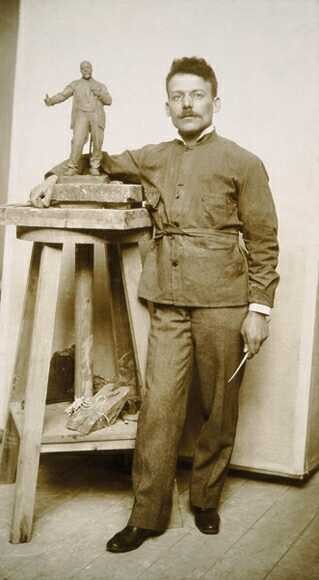
Ede Telcs in his studio around 1900
After returning from Vienna, he worked in the studio of György Zala (1858-1937) for a year. He then became independent. He travelled a lot: he visited many countries and got acquainted with the art centres of the countries. He studied in Utrecht, the Netherlands, for two years, and visited Italy nearly forty times in a few years.
Telcs was a versatile sculptor. By this time he was already preoccupied with medal art. He made about two hundred and fifty major medals and plaques, including a portrait of Artúr Görgey. Telcs made the tombstones of Miklós Barabás, Mihály Munkácsy and Leó Lánczy, among others, as well as the sculptural ornaments of the Academy of Music and the Adria Palace.
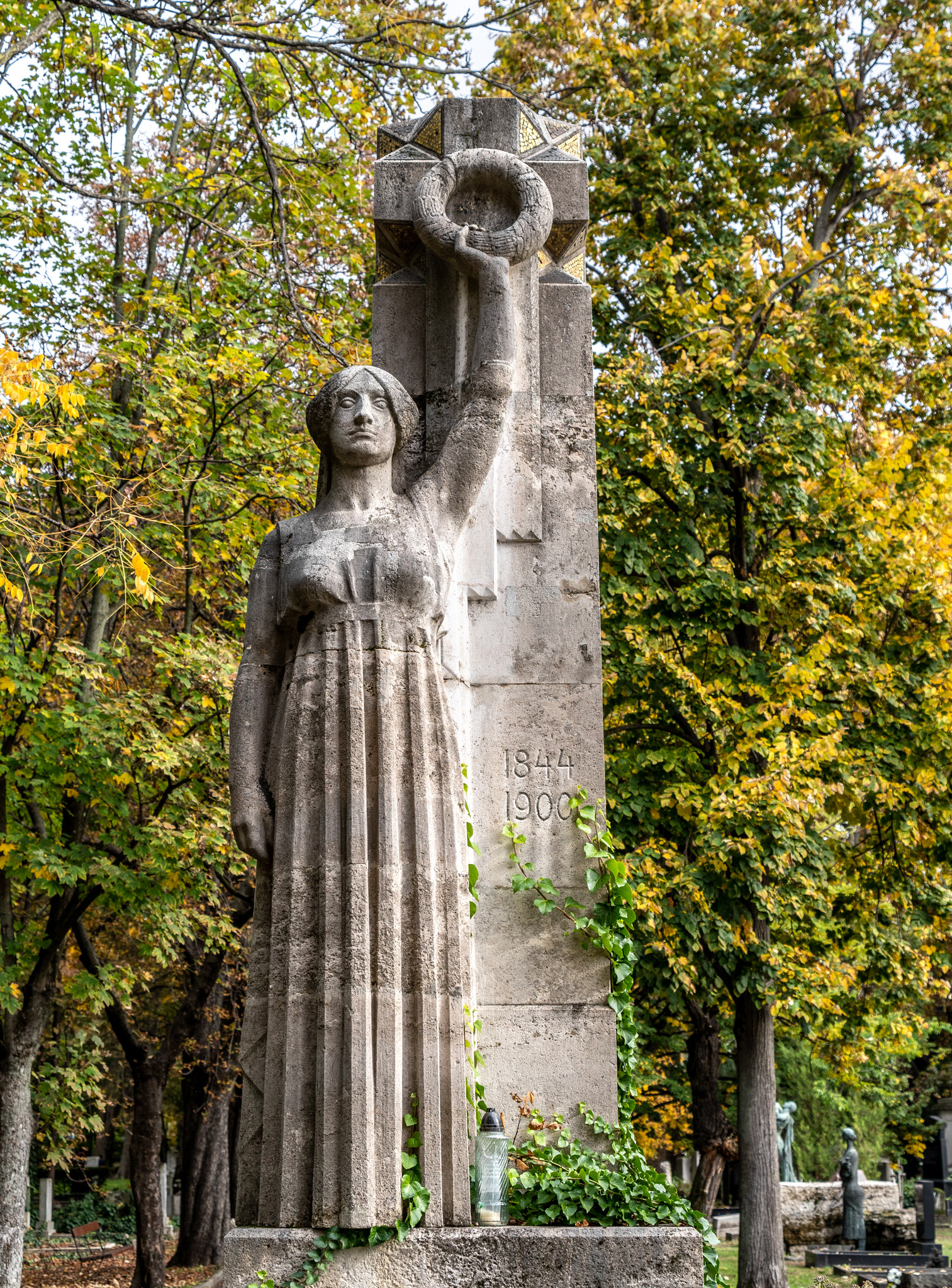
Tomb of Mihály Munkácsy. The work of Ede Telcs from 1911 (Photo: Balázs Both/pestbuda.hu)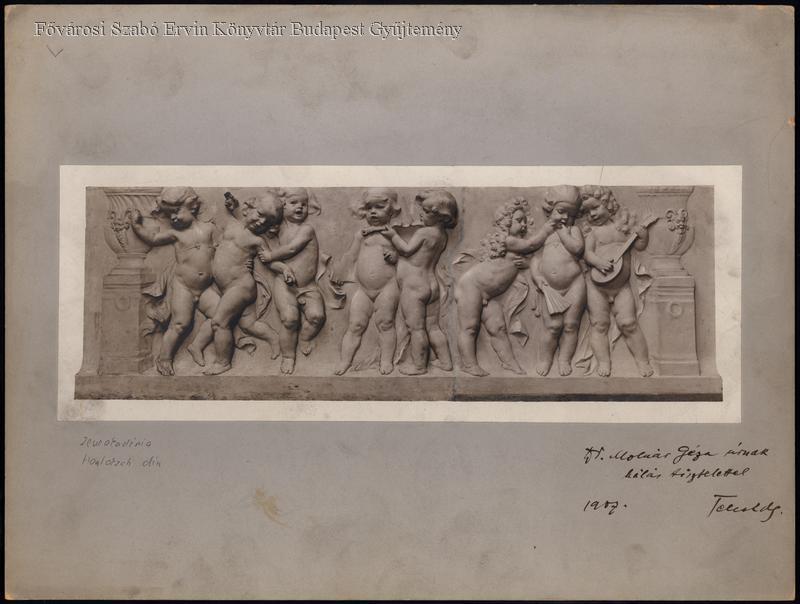
Designs of reliefs depicting the history of music on the building of the Academy of Music (Source: FSZEK Budapest Collection)
He also received orders for public sculptures - he created the figures of kings St. Ladislaus and Charles III on the Millennium Monument. The latter statue was removed from the monument in the Heroes' Square for political reasons after World War II. The artist was especially proud of the Kossuth statue in Kecskemét, which he mentioned as one of his most beautiful works. It is intended that this statue differ from the usual features of the Kossuth statues, which reproduced rapidly throughout the country during the period. The inauguration of the Kossuth statue was held on 1 July 1906, in the main square of the "Famous ('Hírös') City" as part of a national ceremony.
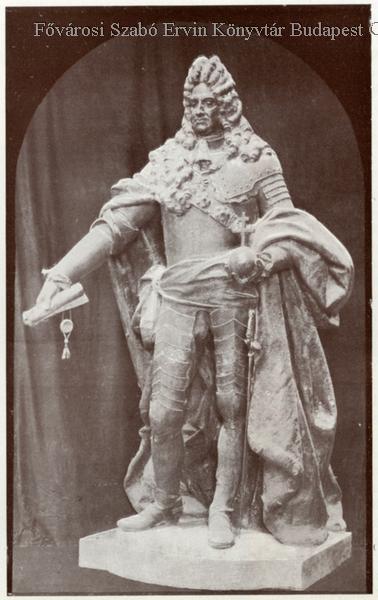
Statue of Charles III in 1908 (Source: FSZEK Budapest Collection)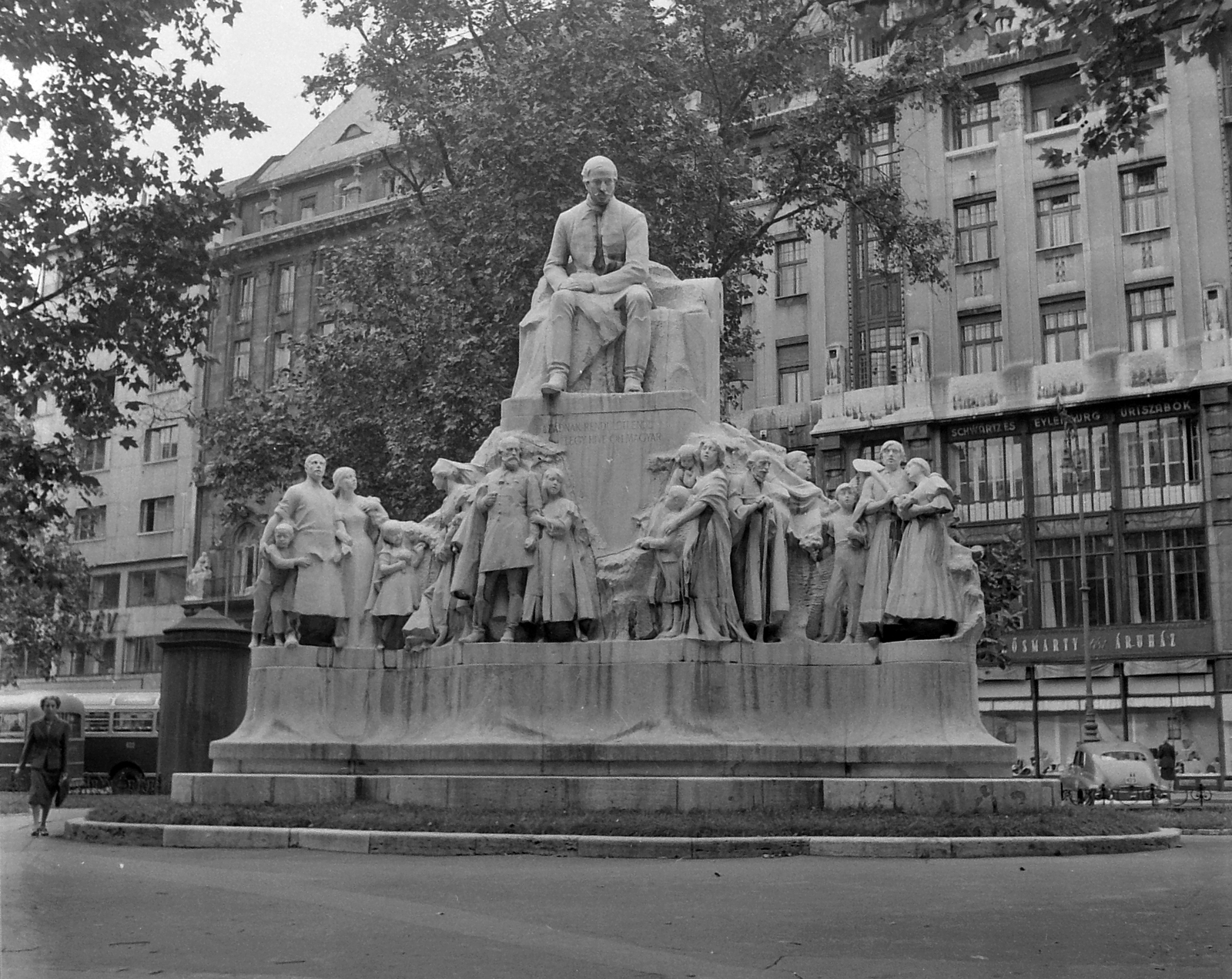
Vörösmarty Square, statue of Mihály Vörösmarty in 1958 (Photo: Fortepan/No.: 16208)
The journalists wrote with great acclaim about the sculptor already at the beginning of the 20th century - in the magazine “Művészet” edited by the art historian Károly Lyka, the critique of László Márkus in 1904 included the following evaluation: “Ede Telcs represents a strictly differentiated statuary in his works, in which he not only cut out the literary content, but also separated himself sharply and with complete determination from the art of painting. He analyses only the effects throughout his art that a less receptive audience than the artist has interpreted as requiring him to translate the mysterious language of forms for the laity. Because the non-artist is actually a one-sided artist who feels Nature, but the feeling does not become self-conscious, and that is why the artist needs to capture the feelings of whole groups of people in lasting material ... A sculptor, like Ede Telcs translates the phenomena of Nature into the language of forms that cannot be expressed by other means of art, so that he is perhaps the most incarnate sculptor against Ferenczy and Mednyánszky painters. Behind his glasses, he sees the world as towering forms, and in his works one can state the hard conviction that he is a sculptor and nothing else. Of the topics on offer, only those that express themselves in closed masses and concise forms have significance for him, and if he chose a topic, he captures it in the permanent material with a special, highly plastic style.”
Ede Telcs: Matyi Hüvelyk (Photo: pestbuda.hu)
Works related to the work of architect Ignác Alpár (1855–1928) were given a prominent role in the oeuvre of Ede Telcs. Telcs, together with his friend Alpár, made the tomb of András Mechwart around 1910, and in 1925, in honour of the celebrated architect's seventieth birthday, a relief containing a large portrait of Alpár was placed in the wall of the Agricultural Museum.
The remains of engineer András Mechwart (1834-1907) were placed in the National Graveyard on Fiumei Road. On the eastern wall of the cemetery, where most of the tombs evoke the Egyptian obelisk that was widespread in the second half of the 19th century, there is also the Mechwart Stele, but in this work another great culture of antiquity, Greek art, “greets us”. The tomb was designed by Ignác Alpár, while the sculpture was designed by Ede Telcs. The relief shows two people, the older male figure is handing over a hammer to the younger one. The allegory symbolises tradition and progress.
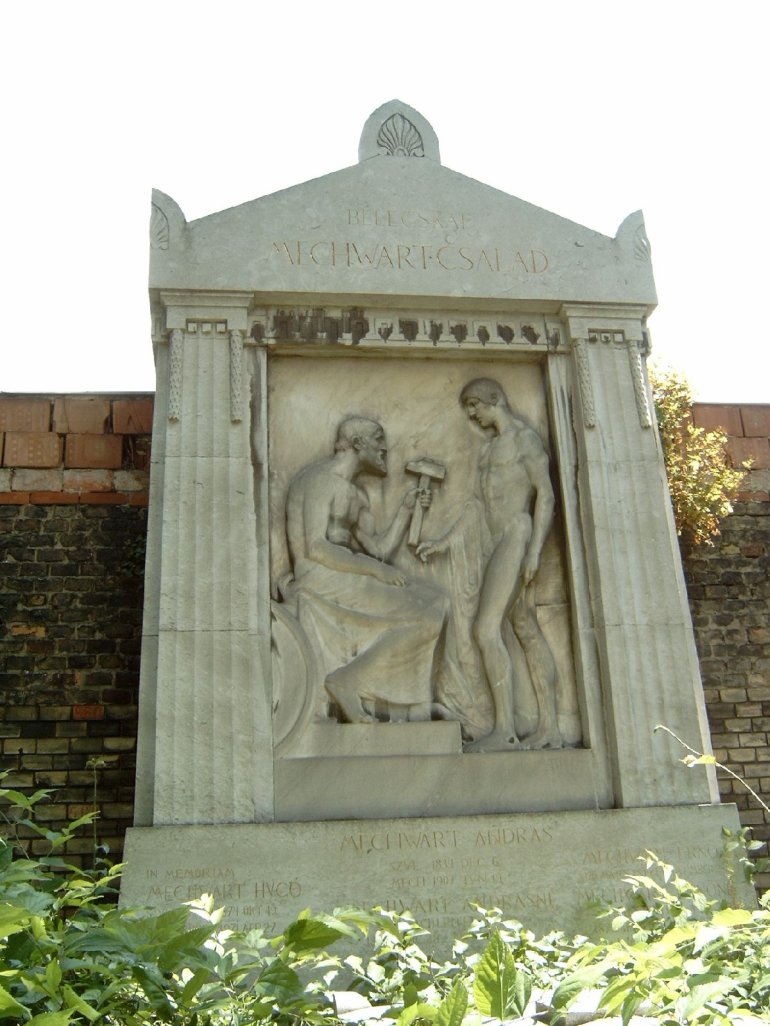
Tomb of András Mechwart in the National Graveyard on Fiumei Road (Source: oszk.hu)
Both Alpár and Telcs often used the forms of antiquity when shaping their tombs. The architect and sculptor based the design of the tomb of András Mechwart on the steles of ancient Greek art. On the white marble tombstone, two fluted pilasters surround the relief placed in the middle. Flower vases also played an important role in the creation of the tomb. In Ignác Alpár's oeuvre, two other tombstones are worth highlighting. The first is the tomb of Henrik Ohrenstein and Sámuel Redlich from 1902 in the Jewish cemetery on Kozma Street, and the second is the tomb of Ignác Wechselmann from 1903 in the Jewish cemetery on Salgótarján Street. Both tombstones are made of very expensive material, black granite.
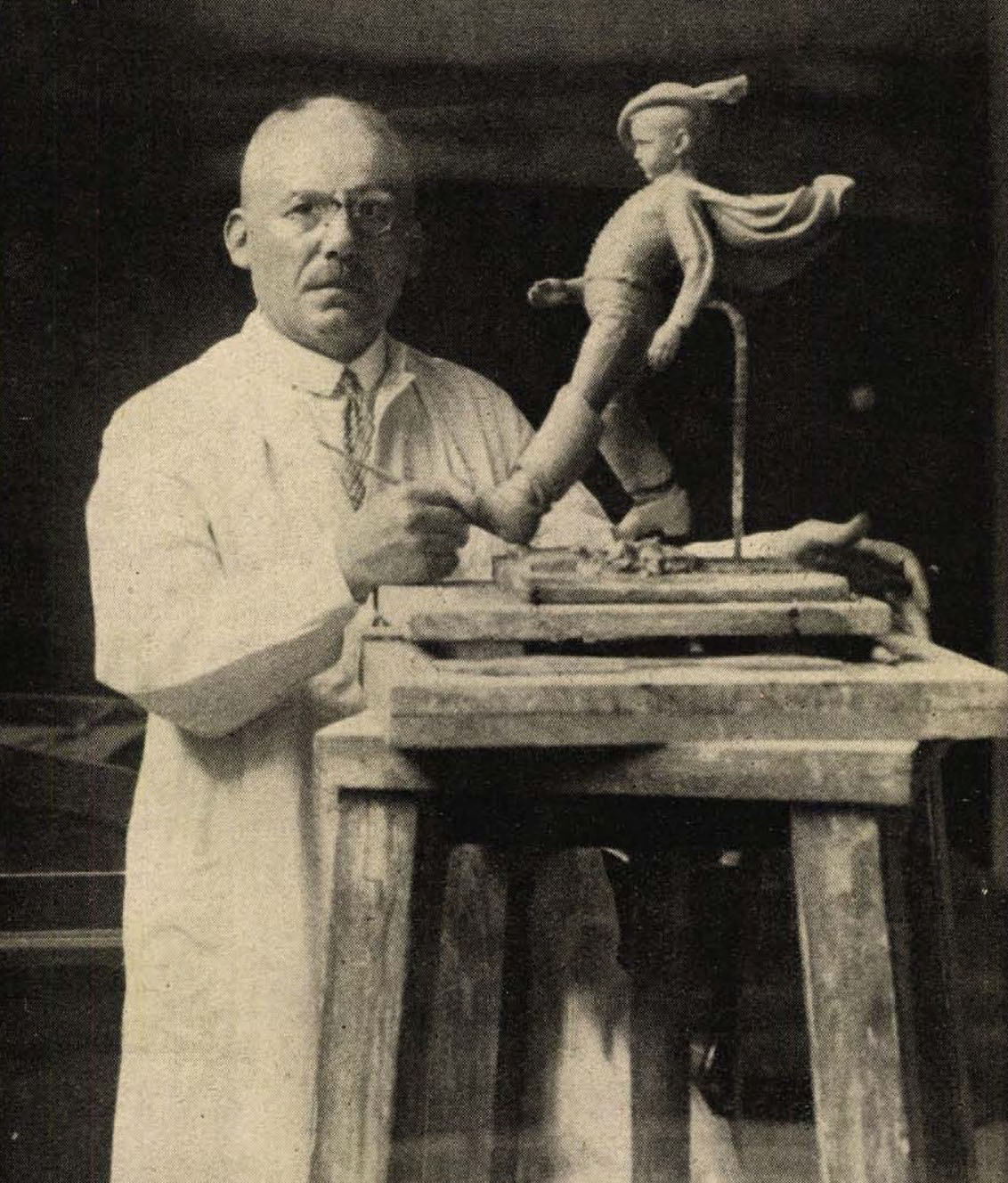
Ede Telcs in his studio, with the model of the Matyi Hüvelyk statue (Photo: Színházi Élet, Issue 38 of 1928)
Ignác Alpár died on 28 April 1928 in Zurich. His funeral was held on 3 May 1928 in Budapest. The architect was laid in state in the City Park chapel dedicated to St. Lazarus (Jáki Chapel, designed by him), and as part of the funeral he was accompanied by a huge crowd to the National Graveyard on Fiumei Road, where the architect's ashes were laid to rest at a prominent point in the cemetery near the arcaded tombs. The tomb of Ignác Alpár was inaugurated on 28 April 1929, a year after his death.
The work evoking the popular funeral type of the imperial Roman empire, the sarcophagus, is a joint work of Ede Telcs and architect Henrik Kotál.
Telcs made three bronze reliefs for the tomb, depicting the most famous works of Ignác Alpár in Budapest: the Agricultural Museum, the huge office building in Szabadság Square, which was built as the former Stock Exchange Palace, and the National Bank, which is also located in this square.
Ede Telcs and Henrik Kotál worked together a few years later, when they made the statue of Ignác Alpár and the pedestal of the statue. Telcs's statue of Alpár is remarkable in several respects. He depicts Ignác Alpár as the leader of a medieval architectural guild in guildmaster costumes. The placement of the sculpture, which was successfully found together with the architect Henrik Kotál, can be said to be optimal. In the City Park, close to the masterpiece of Ignác Alpár, the monument perpetuating him was placed next to the his building complex which was made as the historical main group of the Millennium Exhibition in 1896, then was handed over from final materials in 1907 as the Agricultural Museum.
In this sculpture, Alpár looks proud at his work, which combines the works of Hungarian architecture built in different times and styles in different parts of the Carpathian Basin in one building complex. The Hungarian arriving in City Park from any settlement of the “Truncated Hungary” or from the torn parts of the country in the early 1930s could easily identify with the architect figure appearing in the portrait of Alpár. In Ignác Alpár's representation, they could see that even after many tragedies, "the Hungarians can still hold their heads high." The thousand-year-old culture of the Carpathian Basin can be seen as an organic unit, within which the architectural heritage can be seen as an opportunity to strengthen the sense of Hungarian identity.
In this broader interpretation of the work of art, it is possible to compare the statue of Ede Telcs with the ideas expressed by the prominent politician of the 1920s, Kuno Klebelsberg (1875-1932), first Minister of the Interior, then of Religion and Public Education from 1922 to 1931. The essence of Klebelsberg's almost decade-long “minister of culture” service, which he often stated in his speeches, is that Hungarians can only rise from national tragedies with the help of a correct knowledge of our history and material culture.
In the 1920s, statues depicting the “pain of the Hungarians” weree erected in many places in Budapest, but Ignác Alpár, shaped by Ede Telcs, had an optimistic tone.
The film newscast also reported on the inauguration of the Alpár Statue on 18 October 1931. The following inscriptions can be read on the pedestal of the monument: “IGNÁC ALPÁR / 1855-1928”, and on the other side: “By creating a historical / memorial group / it made our national glory permanent”
Ede Telcs rented several properties in Erzsébet- and Terézváros as a studio in Budapest. He managed to create a final studio house, used from 1924 to 1948, in the 12th District, at the building at 41 Alkotás Street.
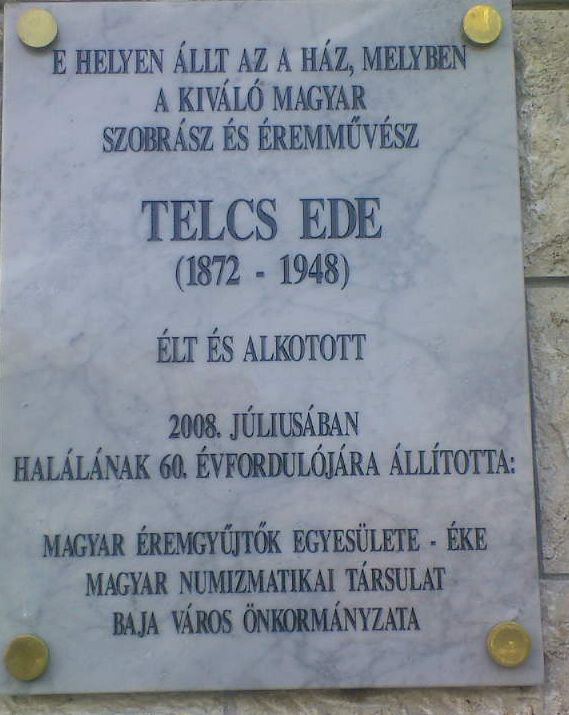
Memorial plaque at 41 Alkotás Street in the 12th District (Source: Wikipedia)
The sculptor died on 18 July 1948, at the age of seventy-seven, honoured with numerous artistic recognitions in his life. His tomb is located in the Farkasréti Cemetery.
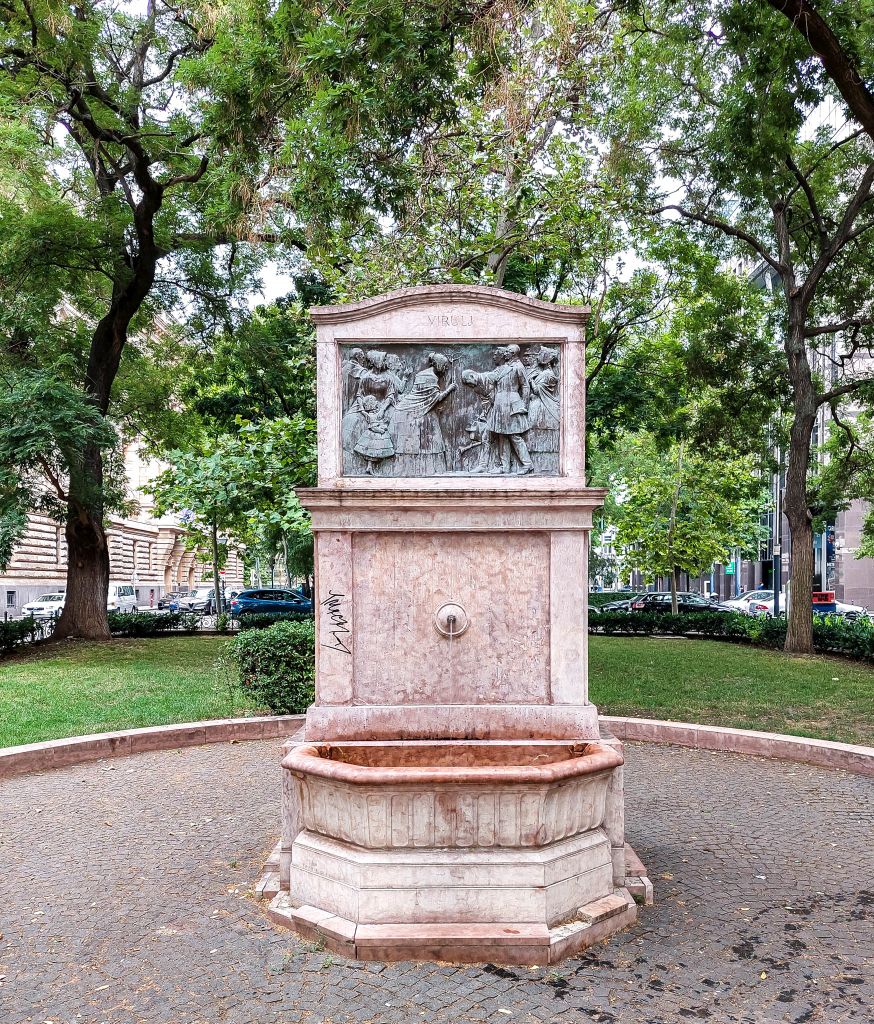
The plaque of the well on Szabadság Square shows the scene when Seilern Crescence is planting the first tree of the Pest promenade. The well is the work of sculptor Ede Telcs and architect András Mészáros (Photo: Balázs Both/pestbuda.hu)
Cover photo: Ede Telcs in his studio (Photo: Színházi Élet, Issue 38 of 1928)

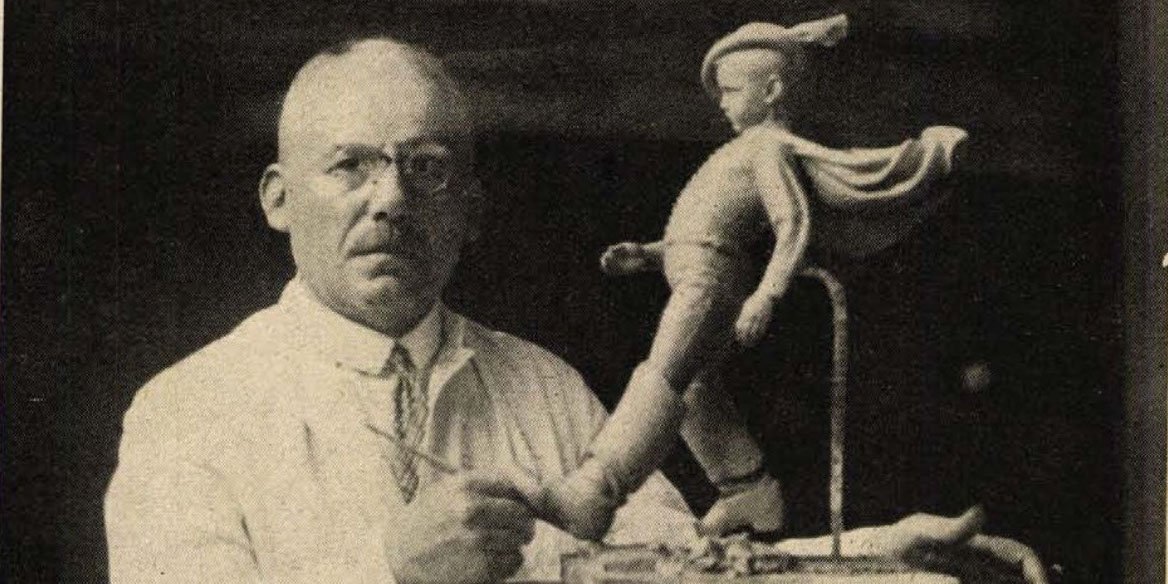
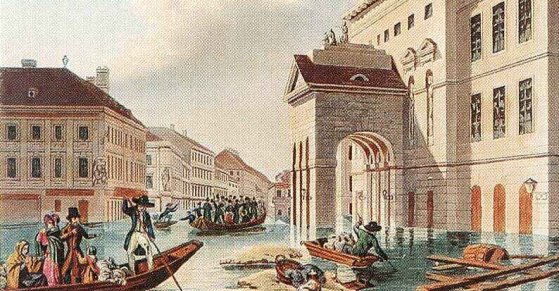
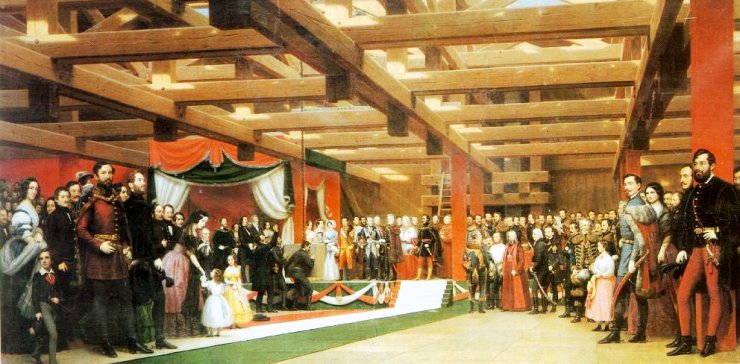
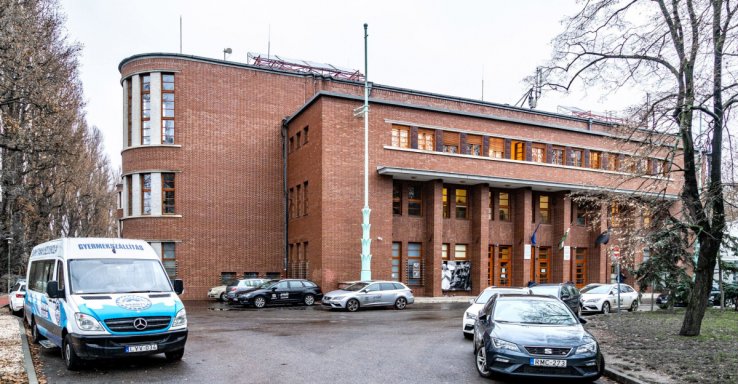

































Hozzászólások
Log in or register to comment!
Login Registration